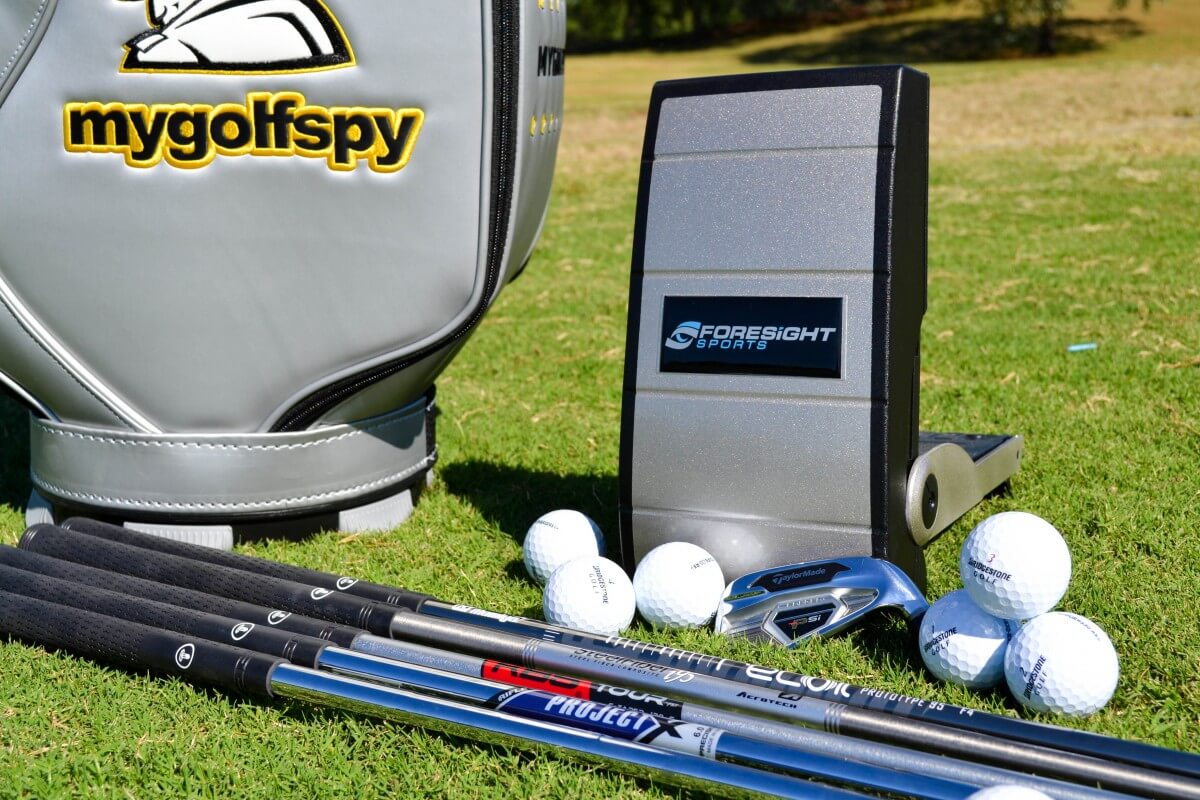Does the golf shaft really matter?
Some will tell you that there’s little to no performance difference between shafts. Others will tell you that the shaft is absolutely everything. Forget the head; it’s the shaft is what matters.
Everybody has an opinion.
For this test, our goal wasn’t to try and identify a single best iron shaft. Few things in golf are so universally true. Instead, we wanted to take a closer look and see what, if any, actual differences exist between shafts. To that end, the shafts in this test feature different weights, different materials, and different bend profiles.
They are, by design, different in nearly every respect.
Are those differences significant enough to yield any actual performance differences? To find out, we had golfers test 5 of the most popular shafts on the market today.
Here’s what we tested:
- Aerotech SteelFiber i95
- KBS C-Taper 120
- Project X Rifle 6.0
- True Temper Dynamic Gold S300
- UST Recoil Prototype 95 F4
*All shafts tested were stiff flex
How We Tested
- Testing was done using a TaylorMade PSi 6-iron head outfitted with Club Conex FUSE-FIT adapters provided by custom fitting specialists, TrueSpec Golf.
- Shafts were cut to a playing length of 37″ and outfitted with identical PURE grips.
- 10 golfers with handicaps ranging from 0-15, and driver swing speeds between 90 and 110 mph participated in this test.
- Each tester hit 12-14 shots with each shaft (rotating between shafts after each 6 shot sequence).
- Any gross mishits and shots coming to rest more than 25 yards from the center line were eliminated and not included in the shot counts.
- Remaining outliers were identified using Median Absolute Deviation (both distance and offline), and dropped prior to our averages being calculated.
- All testers hit Bridgestone B300-RX Golf Balls
- Ball Data was recorded using a Foresight GC2 Launch Monitor
The Data
In addition to our full group averages, we have broken the data down by swing speed groups to provide additional insight into how the shafts performed. Please note that tables are sorted alphabetically by brand.
All Swing Speeds
The table below reflects the data from all golfers in the test.
Observations:
- On average, Aerotech’s SteelFiber generated the highest ball speed as well as the longest carry and total distance.
- Using shot area as a measure of consistency, the KBS C-Taper offered the tightest dispersion.
- KBS C-Taper was also the lowest launching with moderate spin.
- Perhaps not surprisingly, Project X launched the highest by nearly a full degree.
- As a group, testers listed the SteelFiber (graphite/steel blend) and UST Recoil (graphite) as the two “best feeling” shafts.
6-Irons Swing Speed (81-90 MPH)
The chart below shows shaft performance for golfers with 6-iron swings above 80 mph. For easier reference, these are golfers who generally swing their drivers 95MPH or faster.
Observations:
- For higher swing speed players, the SteelFiber shaft again produced the highest average ball speed, as well as the greatest carry and total yards.
- The Project X shaft produced the tightest average dispersion.
- The Project X also produced the highest launch with the lowest spin.
6-Irons Swing Speed (65-80 MPH)
The chart below shows shaft performance for golfers with 6-iron swings below 80 mph. For easier reference, these are golfers who generally swing their drivers below 95MPH.
Observations:
- Within this segment, the KBS C-Taper generated the highest ball speeds by more than 1 MPH, and also was also the longest.
- The C-Taper also produced slightly tighter dispersion within this segment of the test group.
- Project X again launched the highest with moderate spin.
- Testers in this group reported not liking the feel of the DG S300. This is possibly attributable to its higher weight.
Additional Notes:
- The Aerotech SteelFiber produced absolutely identical spin numbers for each of our three segments (we triple-checked, it’s not a typo).
- Not surprisingly, the SteelFiber also produced the most consistent spin numbers (smallest standard deviation) of any shaft in this test.
VERDICT:
So, does the shaft really matter?
Our results show that performance differences between iron shafts are undeniable.
- In general, smoother swingers (picture Ernie Els), find less variation in shaft performance.
- Aggressive swingers, with quicker tempos, will generally see greater performance variations between shafts.
- While not reflected in the group averages, for the majority of our testers, there was one, sometimes two, shafts that offered significant performance benefit.
- As a whole, the data suggests that, for most golfers, often significant differences do exist between shafts.
- As always, we recommend getting properly fitted for your iron shafts.





















John
5 years ago
To all the guys that say 5 yards is not significant-a 1 foot putt is a lot easier than a 16 foot putt if the distance is consistent and assuming the side to side the dispersion is low. Different loading/timing/swing plane/angle of attack means the same shaft at the exact same swing speed will produce a totally different result from person to person hence using various people with various swing characteristics is far better than using a robot. That’s the exact reason that good fitting is vital-setting up of the shaft more than the clubhead.
joey5picks
1 year ago
You’re assuming that 5 yards means the ball will be closer to the hole. It could also be long, so 15 feet past the hole. Or rather than 7.5 feet short or could be 7.5 feet long.